They may be long gone from our malls and main streets, but some stores never really leave us. Whether it was the excitement of picking out a new game at Babbage’s, the smell of popcorn at the front of a department store, or hunting down the perfect CD at Sam Goody, these places were more than just shopping destinations—they were part of growing up. For many Americans, these now-defunct stores hold a special place in memory, shaping weekends, holidays, and everyday routines. Let’s look back at 25 stores that are gone for good but still missed just as much today.
RadioShack

If you needed a random battery, obscure adapter, or electronic component, RadioShack was the spot. It started in 1921, serving radio and tech enthusiasts before evolving into a mall staple. During the computer boom, it was the go-to place for early tech hobbyists and engineers. Eventually, changing technology trends and online competition made it obsolete. RadioShack declared bankruptcy multiple times before disappearing from most locations. Still, tinkerers and old-school tech fans fondly remember its cluttered shelves and helpful staff. It was a nerd’s paradise before being a nerd was cool.
Blockbuster
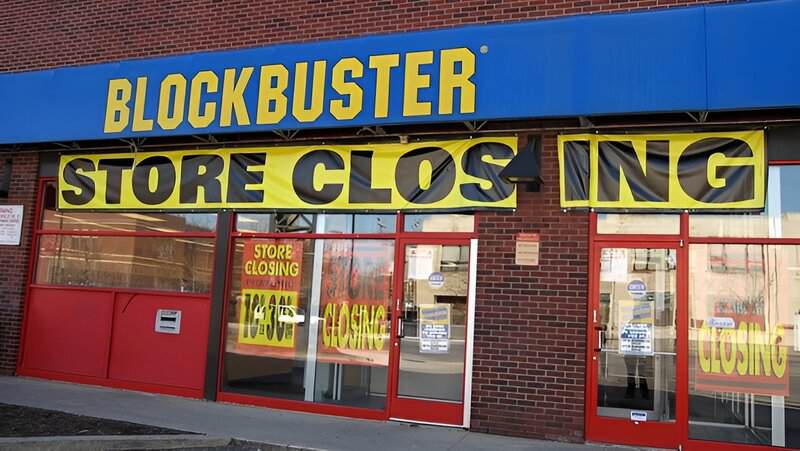
Blockbuster wasn’t just a video rental store—it was an event. Families would spend Friday nights picking out VHS tapes, grabbing candy, and arguing over what to watch. At its peak, Blockbuster had over 9,000 stores worldwide. Its fall came quickly with the rise of Netflix and streaming services. But who could forget those yellow and blue tickets, the late fees, or that “Be Kind, Rewind” sticker? Many millennials remember their childhood weekends revolving around the trip to Blockbuster. One lonely store still exists in Bend, Oregon—now a tourist attraction for nostalgia seekers.
Toys “R” Us

Few places matched the magic of Toys “R” Us for kids growing up in the ‘80s and ‘90s. With endless aisles of action figures, bikes, and board games, it felt like paradise. The jingle “I don’t wanna grow up…” still echoes in the minds of adults today. Despite efforts to revive the brand, the iconic giraffe Geoffrey couldn’t stop the closures in 2018. Competition from Amazon and big-box retailers sealed its fate. Still, former kids remember it as the place to dream big. Mini pop-ups have appeared, but nothing matches the original experience.
Borders
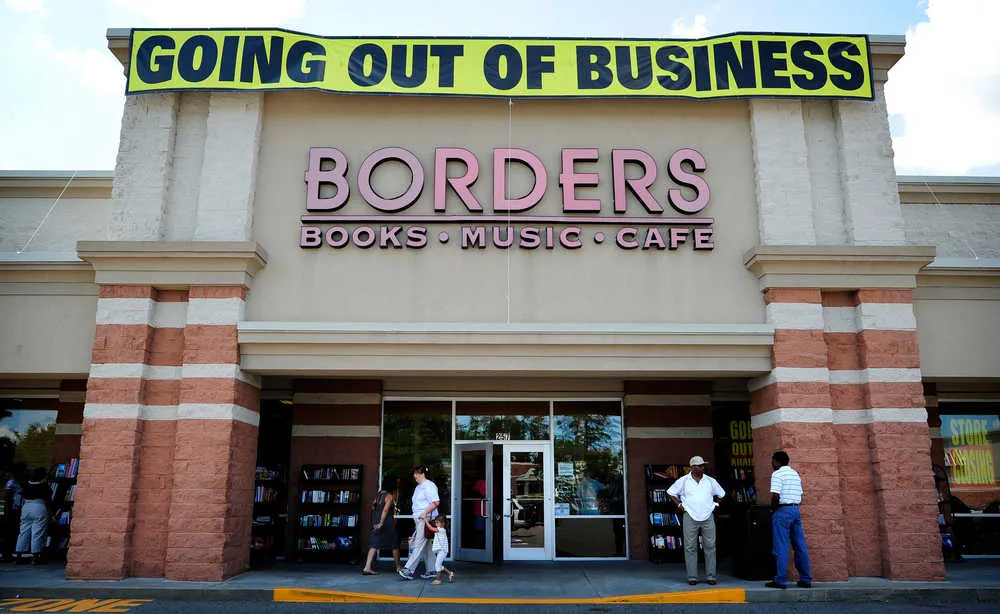
Book lovers still mourn the loss of Borders, once a rival to Barnes & Noble. It was more than a bookstore—it was a space to linger, explore music, and grab a coffee. The inviting layout made it a hangout spot, especially for students and creatives. Borders fell behind in the digital race, failing to adapt to e-books and online shopping. Amazon and shifting reading habits ultimately led to its closure in 2011. Many still remember their first copy of Harry Potter or The Da Vinci Code bought at Borders. It was a place that made books feel special.
Circuit City

Before Best Buy dominated electronics retail, there was Circuit City. Known for its red-plug logo and huge selection of TVs, stereos, and gadgets, it was a tech-lover’s dream. Their drive-thru pick-up and in-store demos were ahead of their time. Unfortunately, poor management and increasing competition led to its demise in 2009. The company failed to transition into the digital world fast enough. Despite its fall, many remember buying their first flat-screen or Walkman there. It marked a time when tech shopping was an experience, not just a transaction.
KB Toys

Located in nearly every mall, KB Toys was a smaller but beloved rival to Toys “R” Us. It specialized in action figures, stuffed animals, and impulse buys. Their aisles were narrow and overflowing, creating an exciting sense of discovery. The chain was often a highlight during mall trips with mom or dad. KB Toys closed in 2009 after being unable to compete with e-commerce. Its seasonal pop-ups made brief comebacks, but never regained full traction. Still, for many, it’s a cherished part of childhood mall memories.
Woolworth’s
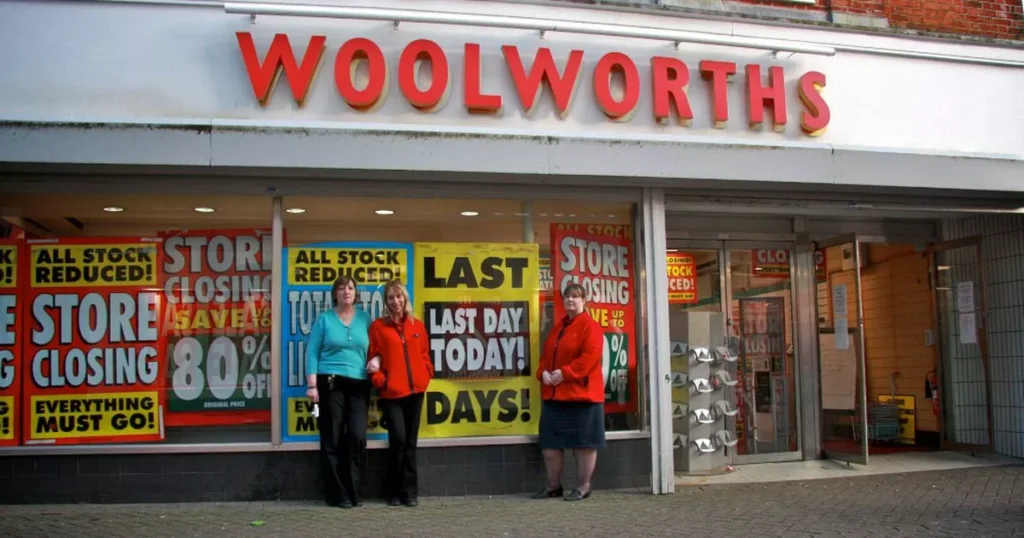
Woolworth’s was one of the original five-and-dime stores, dating back to the 1870s. It sold everything from candy to clothes and even had lunch counters, making it a community staple. At its peak, it was one of the world’s largest retail chains. But as shopping habits changed, it failed to adapt and closed its last U.S. stores in 1997. The name lives on in Australia and South Africa, though unrelated to the original. Many remember it for the nostalgia of simpler times and soda fountain milkshakes. It was the heart of many downtowns.
Sam Goody
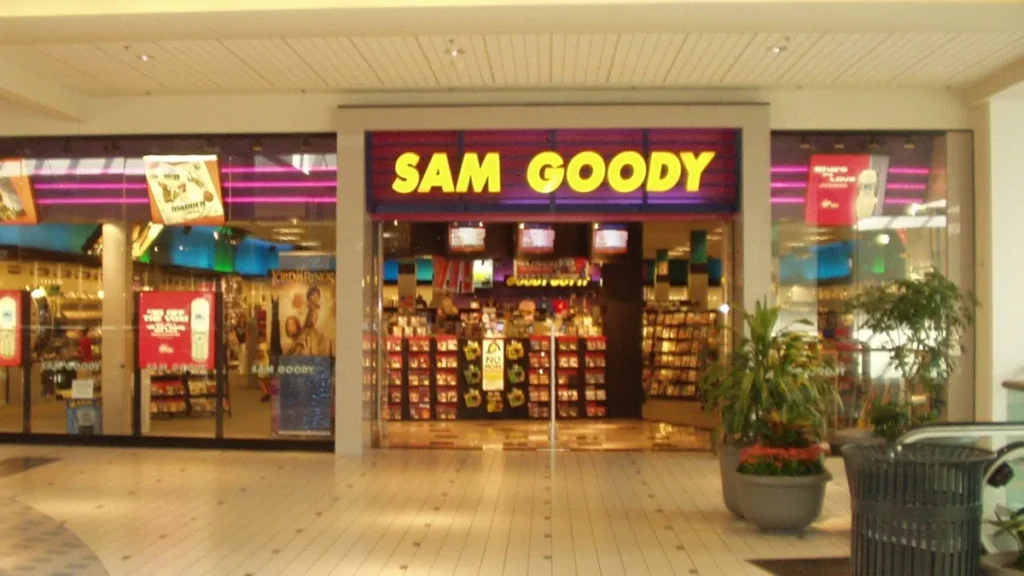
Music lovers once flocked to Sam Goody for the latest CDs, cassettes, and vinyl. Located in malls, it was a key destination for discovering new tunes before streaming. The store’s walls were plastered with posters, headphones offered samples, and cashiers often knew their music. As iTunes and MP3s emerged, physical music sales plummeted. Sam Goody couldn’t compete, and by the late 2000s, most locations shuttered. But Gen Xers and older millennials still remember their favorite albums bought there. It was more than a store—it was a vibe.
The Limited

This women’s fashion retailer was once a major player in mall culture. Known for its chic and polished aesthetic, The Limited was a go-to for workwear and trendy outfits. It was particularly popular among young professionals in the ’90s. Competition and changing fashion tastes led to its decline. It closed its physical stores in 2017, though its brand briefly resurfaced online. Shoppers still remember its elegant style and frequent sales. It helped define the look of an era.
Montgomery Ward
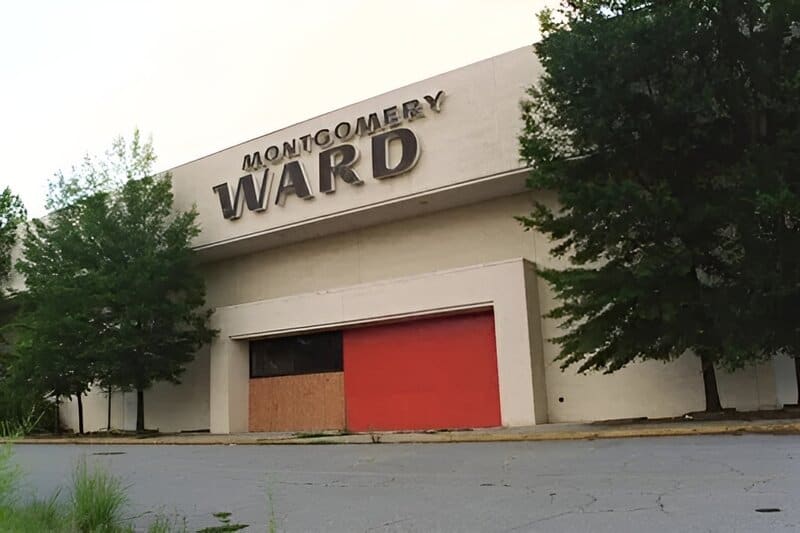
Before Sears and Amazon, there was Montgomery Ward—one of the earliest mail-order retailers. It began in 1872, transforming how Americans shopped with its massive catalogs. Eventually, it expanded into department stores across the country. Despite efforts to modernize, it filed for bankruptcy and closed in 2001. The brand has since returned online, but its department store legacy is what people recall. Its catalog brought joy and anticipation to homes for over a century. A symbol of American retail innovation, it left a lasting legacy.
Tower Records
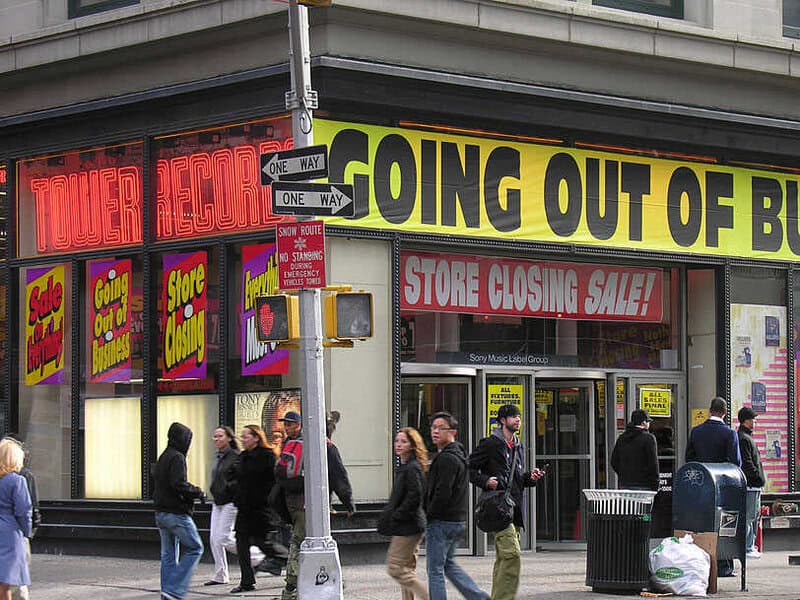
Tower Records was a haven for music aficionados. With massive stores, rare imports, and a deep catalog, it was the spot to dig for gems. The store cultivated a culture around music, including in-store performances and listening stations. Digital downloads and online retail spelled its end in the early 2000s. The last U.S. store closed in 2006, though the brand was revived online. For many, browsing Tower Records was as much about the experience as the music. It made music feel tactile and personal.
Linens ’n Things

Before Bed Bath & Beyond dominated the scene, Linens ’n Things was the go-to for home goods. They sold bedding, kitchen tools, and décor at affordable prices. Their spacious layouts and seasonal displays made shopping feel like a cozy adventure. Economic downturns and competition led to its closure in 2008. Though the brand lives online, the store’s physical charm is missed. Many remember it as a staple for new homeowners and college dorm shoppers. It felt like a home makeover in a single trip.
Mervyn’s

Mervyn’s was a mid-tier department store known for affordable clothing and back-to-school sales. It had a strong presence in California and the western U.S. The store was especially beloved for its “Back-to-School” commercials and kid-friendly atmosphere. Financial trouble and increased competition led to its shutdown in 2008. Attempts to revive the brand have failed to stick. Still, those who grew up shopping there recall it fondly. It was a family-friendly shopping tradition.
Babbage’s

Before GameStop, there was Babbage’s—one of the first major video game retailers. It was a haven for PC gamers and early console fans alike. You could browse floppy disks, strategy guides, and cartridges for hours. The brand eventually merged into what became GameStop, but the original name holds nostalgic power. Many remember pre-ordering Doom or Warcraft there. It was a nerdy treasure chest for gamers of the ’80s and ’90s. Though the name is gone, it laid the groundwork for modern game retail.
Service Merchandise

This hybrid catalog and showroom store was a unique retail model. Customers browsed floor models and then picked up purchases from a conveyor belt. It felt high-tech and futuristic at the time. Service Merchandise specialized in jewelry, electronics, and small appliances. It couldn’t survive the rise of big-box stores and e-commerce, shuttering in 2002. The novelty of its shopping experience lives on in people’s memories. Many remember circling items in the catalog like it was Christmas.
Pier 1 Imports
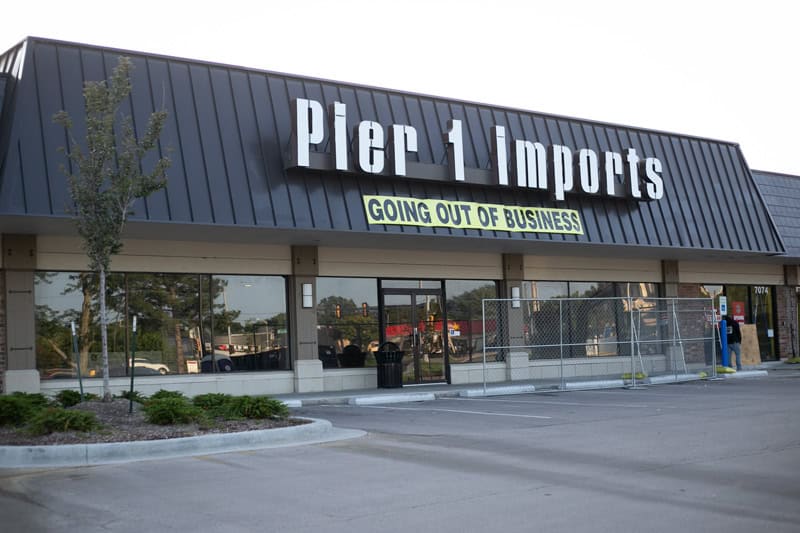
Pier 1 Imports brought global style to suburban homes with its eclectic furniture and home décor. Known for its bohemian flair, it was a favorite for those seeking something different. Their scented candles and funky dishware made the store feel like an adventure. Despite decades of success, the brand filed for bankruptcy in 2020. An online revival followed, but the in-store experience was what people really loved. It had charm, character, and the smell of potpourri in every aisle. Pier 1 was like a global bazaar in mall form.
Hastings
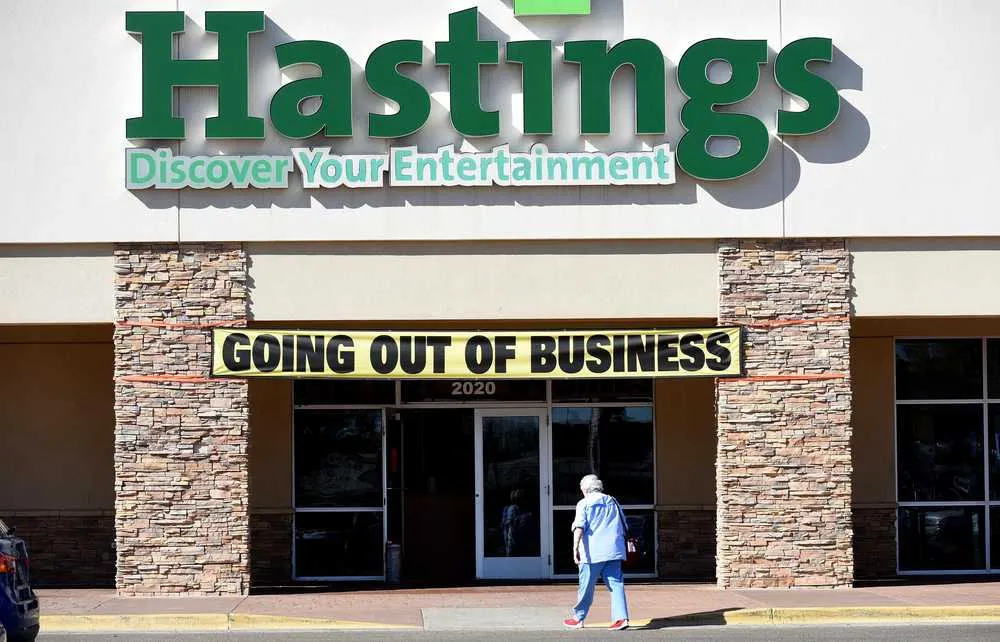
Hastings was a unique mix of bookstore, video rental shop, and music store all in one. It served smaller towns that lacked big-city entertainment hubs. You could rent a movie, grab a book, and browse music all in a single visit. As digital media rose, Hastings struggled and eventually shut down in 2016. Still, for many in rural America, it was a cultural lifeline. It wasn’t just a store—it was a hangout. Its loss marked the end of a certain kind of small-town entertainment.
A&P (The Great Atlantic & Pacific Tea Company)
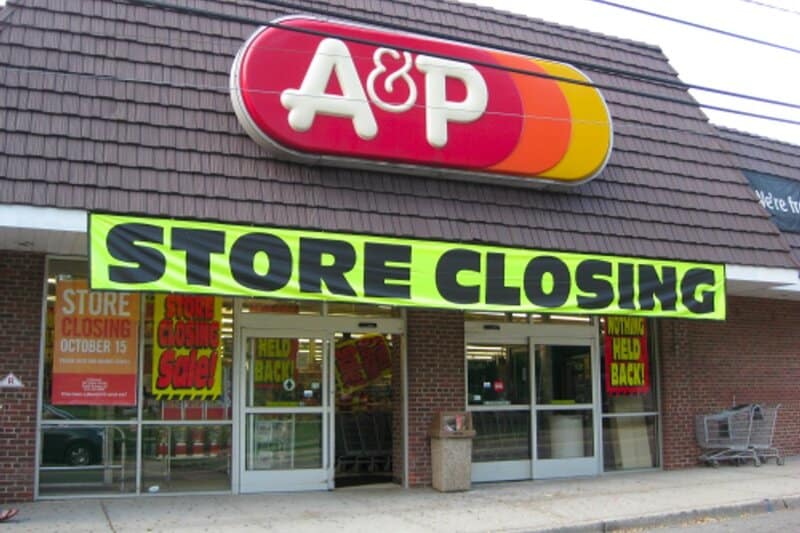
Once the largest grocery chain in the U.S., A&P was founded in the 1850s. It revolutionized grocery shopping and dominated for over a century. Known for its store-brand products and no-frills approach, it was everywhere in mid-century America. A series of missteps and increased competition led to its slow decline. It finally shuttered in 2015 after 156 years in business. Many remember going with their parents or grandparents to A&P for weekly groceries. It was the original neighborhood grocer.
Payless ShoeSource

Payless made affordable shoes accessible to millions of families. It was known for buy-one-get-one deals and rows of self-service shoe boxes. The store was a back-to-school staple for decades. Despite a brief rebranding effort, it filed for bankruptcy and closed U.S. stores in 2019. Though it has since reemerged online and internationally, the mall-based Payless lives in memory. Generations remember picking out their first pair of sneakers there. It was functional, frugal, and familiar.
Bon-Ton

Bon-Ton was a regional department store popular in the Northeast and Midwest. It carried everything from clothing to cosmetics to housewares. Many communities depended on it as their main shopping destination. The company couldn’t withstand retail upheaval and closed in 2018. A few online attempts have been made to revive it, but the original stores remain missed. Locals remember holiday window displays and annual sales fondly. It felt like a small-town Macy’s.
Gadzooks

In the early 2000s, teens flocked to Gadzooks for trendy clothes and bold graphic tees. With its funky displays and edgy vibe, it felt like a cooler version of the mall. Gadzooks eventually shifted to focus on women’s clothing before being acquired by Forever 21. The transition didn’t last, and the stores disappeared by 2005. Still, its distinct brand lives on in the memories of Gen X and millennial shoppers. It was chaotic, colorful, and very of its time. For a while, it was the cool kid’s wardrobe in a store.
Delia’s

Delia’s was the catalog for teen girls in the ‘90s and early 2000s. Eventually branching into retail stores, it featured quirky fashion, bold prints, and a carefree vibe. The brand felt empowering, fun, and rebellious. As styles shifted and fast fashion took over, Delia’s faded away, filing for bankruptcy in 2014. Though it has resurfaced in limited form, it hasn’t captured the original energy. Former fans still cherish those thick catalogs and their first platform sandals. It was a rite of passage for a generation.
Sports Authority

Before Dick’s Sporting Goods took over, there was Sports Authority. It was the place for cleats, gym bags, yoga mats, and everything in between. Many kids got their first team jersey or baseball glove there. The brand filed for bankruptcy in 2016, unable to compete with online giants. Though some stores were converted, the name disappeared. For sports families, it was a regular weekend stop. It was where athletes of all ages geared up.
Zany Brainy
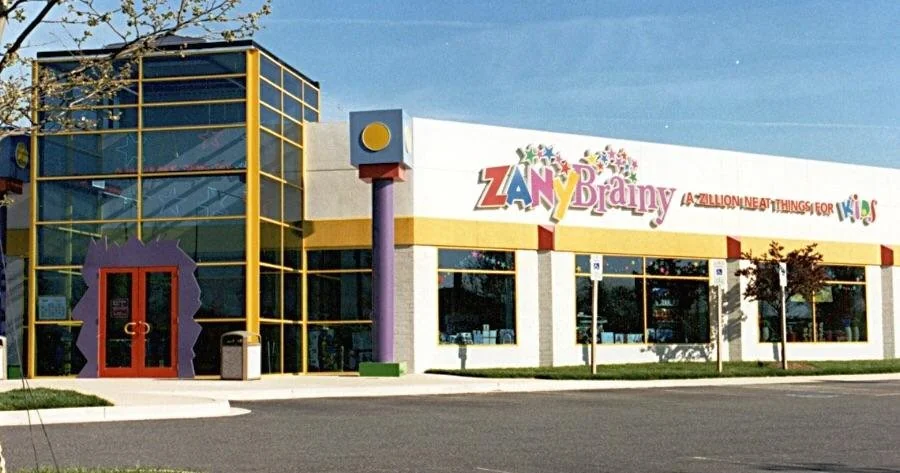
This educational toy store blended fun with learning. It offered books, puzzles, science kits, and toys that encouraged creativity. Parents loved it for offering alternatives to plastic-heavy mainstream toy stores. Despite its strong mission, it folded in 2001 due to financial trouble. It later merged with another toy chain, only to disappear altogether. Still, many remember it as a brighter, more enriching toy store. It made learning exciting for curious kids.
Waldenbooks
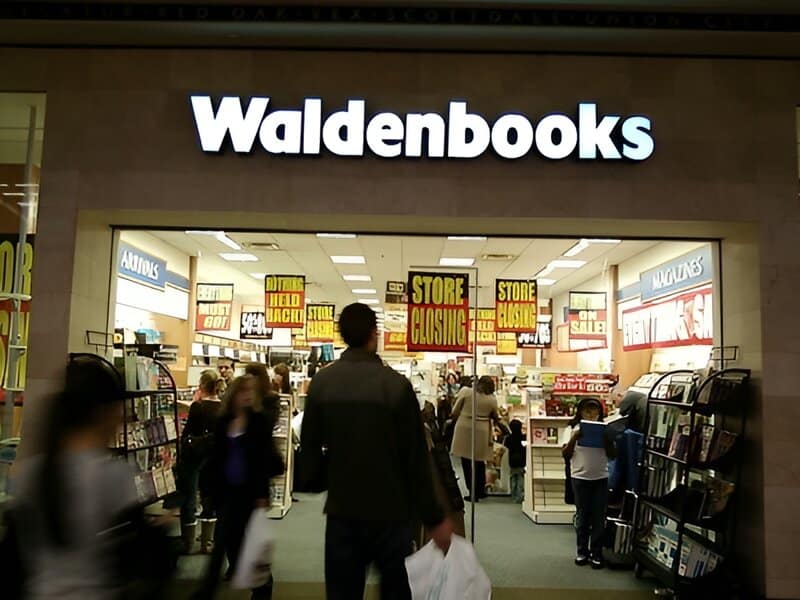
Waldenbooks was a beloved mall-based bookstore chain popular in the ’80s and ’90s. Its compact stores made browsing feel personal and cozy. It introduced countless young readers to genres like fantasy, sci-fi, and romance. Eventually, it was absorbed into Borders, and by the 2010s, all locations had closed. For many, it was their first bookstore experience and a gateway to a lifelong love of reading. Waldenbooks brought literature to everyday places, making books accessible and exciting.
